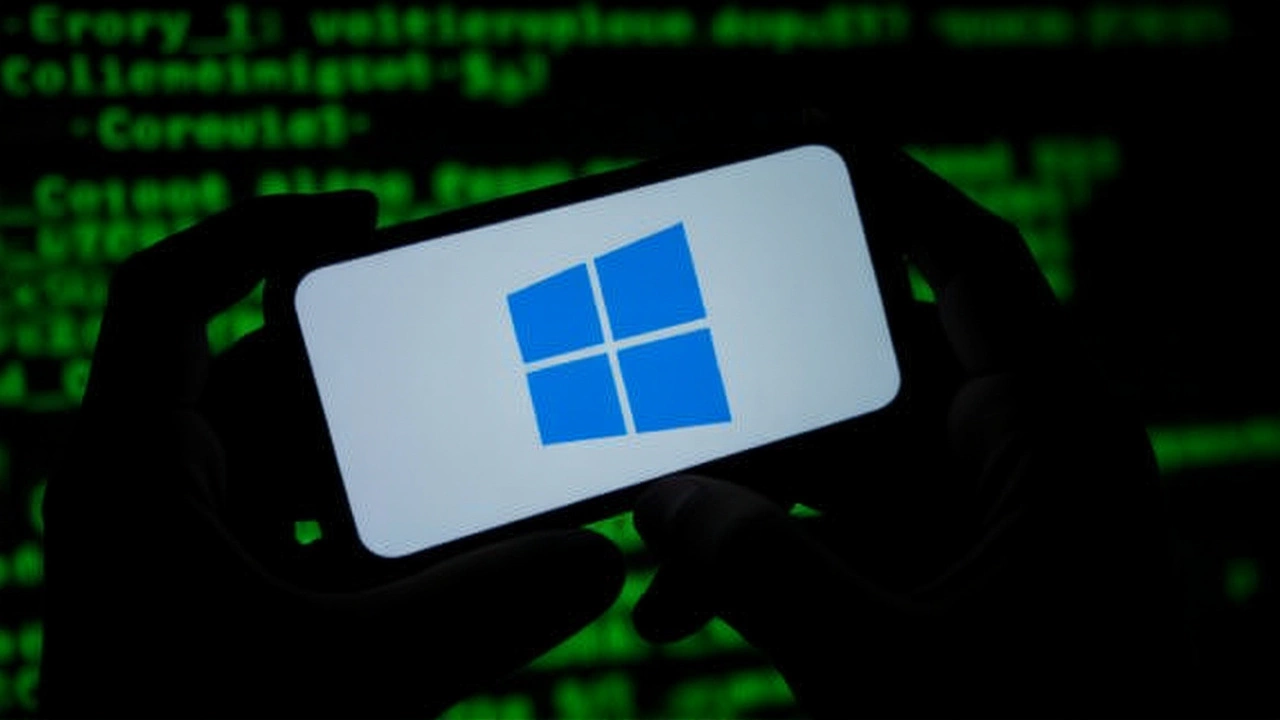On October 24, 2025, cybercriminals began weaponizing a terrifyingly simple flaw in Microsoft’s internal update infrastructure — and it’s already working. The vulnerability, CVE-2025-59287, hides in the Windows Server Update Service (WSUS), a system designed to keep enterprise networks secure. Instead, it’s now a backdoor. Attackers don’t need passwords. They don’t need user clicks. They just need network access — and suddenly, they own every machine that trusts Microsoft updates. "It’s point-and-shoot," said John Hammond, senior security researcher at Huntress. "One click, and you’re in. No skill required."
How a Patch Became a Weapon
The flaw is a deserialization vulnerability — a classic, decades-old weakness that’s still deadly because people forget to validate inputs. In WSUS, when a server receives a malformed update request, it blindly processes it. That’s enough to execute arbitrary code at the highest system level: SYSTEM privileges. No authentication. No user interaction. Just a network path. Microsoft initially released a patch on October 24, 2025, only to discover it didn’t fix the core issue. They pulled it and reissued an emergency update — a rare move that signals just how dire things are. "We rereleased this CVE after identifying that the initial update did not fully mitigate the issue," a Microsoft spokesperson confirmed. That’s not just a bug. That’s a breach waiting to happen.The Supply Chain Nightmare
This isn’t about one server getting hacked. It’s about turning the entire update pipeline into a weapon. "By compromising this single server, an attacker can take over the entire patch distribution system," explained Justin Moore, senior manager at Palo Alto Networks Unit 42. "They can push malware to every workstation under the guise of a Microsoft update. No one will suspect it." Imagine this: A hospital’s IT team gets a "critical security update" from Microsoft. They approve it. It rolls out to 500 devices. Only — it’s not from Microsoft. It’s from a hacker who hijacked the update server. The malware? Ransomware. Credential stealers. Remote access tools. All signed with Microsoft’s digital certificate. The system thinks it’s safe. It’s not.Who’s Affected — And How to Spot It
The vulnerability impacts every version of Windows Server from 2012 through 2025 — yes, even the latest — if the WSUS role is enabled. That’s not a small number. It’s every enterprise, school district, government agency, and healthcare network that relies on centralized patching. CISA’s Cybersecurity and Infrastructure Security Agency issued a stark warning: "Identify servers with WSUS Server Role enabled and ports open to 8530/8531." Those are the listening ports. If they’re exposed to the internet? You’re already in the crosshairs. The Cyber Centre of Canada — part of the Communications Security Establishment — confirmed active exploitation in multiple sectors. "We are aware of active exploitation," their advisory AV25-666 read. No sugarcoating.
What to Do Right Now
There are three paths — and they’re urgent. 1. Apply the October 24, 2025 out-of-band update immediately. It’s the only true fix. Reboot after installation — no exceptions. 2. Disable the WSUS Server Role. If you can’t patch right away, turn it off. Yes, that means clients won’t get updates. But it’s better than letting attackers push malware to every device. 3. Block ports 8530 and 8531 at the firewall. If WSUS must stay on, isolate it. Don’t let it talk to the outside world. CISA set a hard deadline: Federal agencies must remediate related vulnerabilities by November 4, 2025. Private sector? There’s no grace period. The clock started on October 24.Why This Isn’t Isolated
This attack didn’t happen in a vacuum. It rode the wave of Microsoft’s largest Patch Tuesday ever — 175 vulnerabilities patched on October 14, 2025. Among them? CVE-2025-24990 (added to CISA’s KEV catalog), CVE-2025-62215 (a kernel elevation flaw), and CVE-2025-62220 (a Linux GUI RCE). All actively exploited. Even the fix for CVE-2025-59287 came with a cost: Microsoft removed theltmdm64.sys driver to close the door. Result? Fax modems that relied on it stopped working. A reminder: Security isn’t always clean. Sometimes, you break old things to protect new ones.

What’s Next?
Attackers are moving fast. The public proof-of-concept code for CVE-2025-59287 is already circulating on underground forums. Within days, automated scanners will be hunting for open WSUS ports. Organizations that delay will be the next headlines. And while Microsoft promises extended security updates for Windows 10 until October 10, 2028, the writing’s on the wall: If you’re still on Windows 10, you’re running on borrowed time. The end-of-support date for Windows 10 security updates — October 14, 2025 — was a warning. Now it’s a countdown.Frequently Asked Questions
How does this affect organizations still using Windows 10?
Organizations on Windows 10 are vulnerable if they run WSUS servers — even if the client machines are Windows 10. The flaw lives on the update server, not the endpoints. Microsoft will continue delivering security updates to Windows 10 until October 10, 2028 via its Extended Security Updates (ESU) program, but only if enrolled. Without ESU, systems become sitting ducks after October 14, 2025. The real risk? An attacker compromises your WSUS server and pushes malware disguised as a Windows 10 patch.
What if I can’t reboot my servers right away?
Rebooting is non-negotiable. The October 24, 2025 patch modifies core system files that only load after a restart. Skipping it leaves you exposed. If rebooting causes downtime, isolate the WSUS server from the internet immediately, disable the role, and schedule the reboot during a maintenance window. Delaying the reboot is the same as leaving your front door unlocked while you’re on vacation.
Are cloud-based update services like Intune affected?
No. The vulnerability only affects on-premises Windows Server Update Service (WSUS) deployments. Microsoft Intune, Azure Update Management, and other cloud-based patching tools use entirely different infrastructure and are not vulnerable to CVE-2025-59287. However, if your organization uses a hybrid model with on-prem WSUS servers feeding cloud clients, those servers are still at risk — and could compromise cloud-connected endpoints.
Why didn’t Microsoft catch this before release?
WSUS is a legacy system, originally built in the early 2000s and layered with patches over two decades. Security testing often focuses on newer components, leaving older subsystems under-scrutinized. This flaw slipped through because it exploited a behavior that hadn’t been considered a vector in modern threat models. Microsoft’s rushed response — pulling and reissuing the patch — confirms they underestimated how easily it could be weaponized. It’s a reminder: Legacy systems are not just outdated. They’re dangerous.
What’s the difference between this and the SolarWinds attack?
SolarWinds was a supply chain attack too — but it required months of stealthy code insertion into a trusted software build. This is faster, dirtier, and more accessible. Attackers don’t need to infiltrate Microsoft’s build servers. They just need to find an exposed WSUS port. No nation-state resources required. A teenager with a script can do it. The scale is similar — but the entry barrier is a thousand times lower.
Is there a way to detect if my network has already been compromised?
Look for unusual outbound connections from your WSUS server to unknown IPs, especially on port 8530 or 8531. Check for unexpected changes in update logs — files with odd names, timestamps matching the October 20–24 window, or unsigned updates being approved. Tools like Microsoft Defender for Endpoint or CrowdStrike Falcon can flag anomalous patch behavior. If you see anything suspicious, assume compromise. Disconnect the server and engage incident response immediately.
